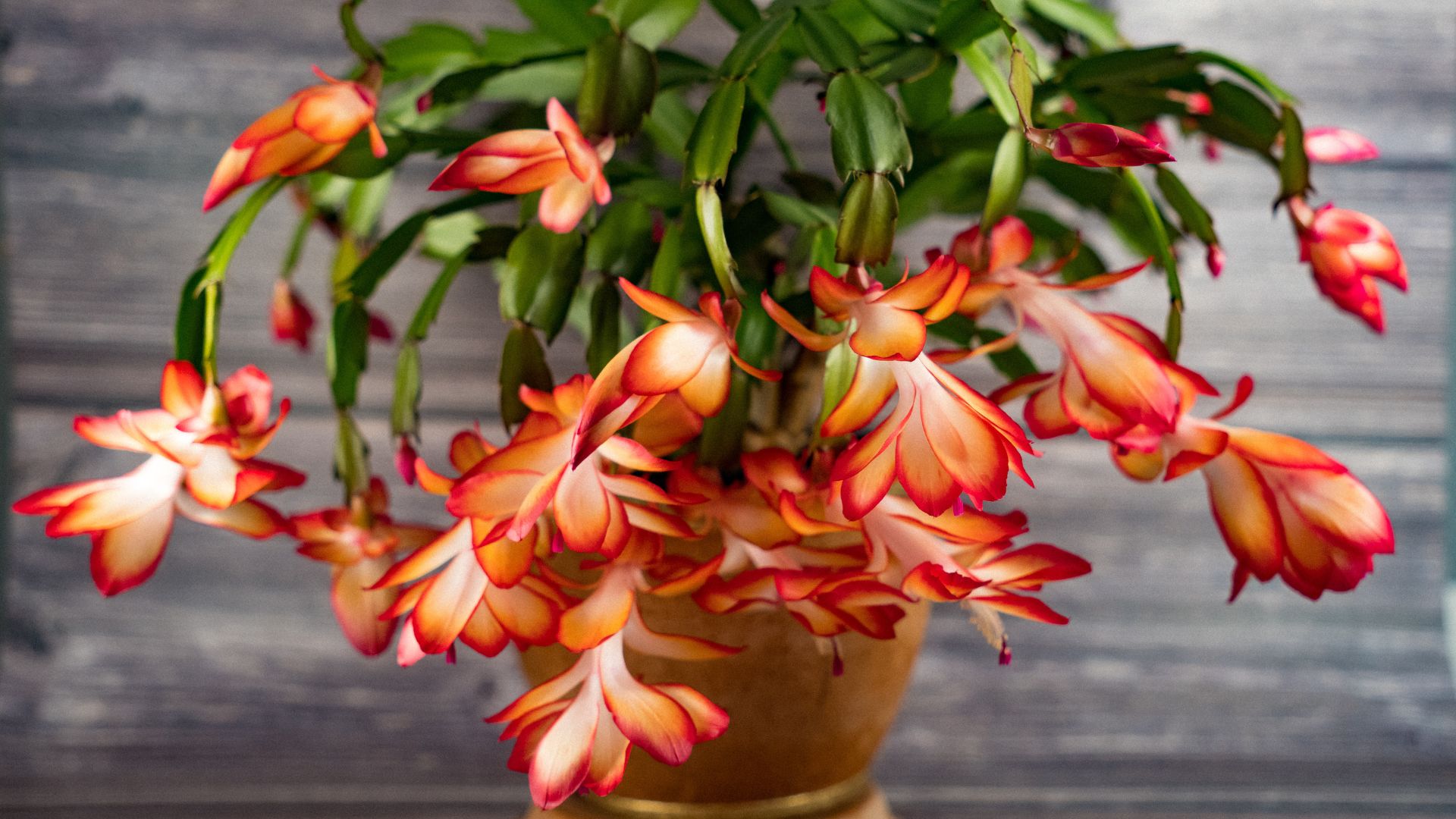
The Christmas cactus, also known as the Holiday cactus, or more accurately, Schlumbergera, is a trailing tropical cactus that puts on a fabulous annual display of flowers. These blooms usually appear around late November to late January, hence the plant's nickname.
Like any living thing, there may be occasions when your seasonal Schlumbergera may not flower on schedule. If you've been left wondering why your Christmas cactus is not blooming, we have some answers for you. The disappointing lack of festive flowers may indicate that your Christmas cactus care might need some adjustments.
We've asked plant experts what might cause your Christmas cacti not to flower and what needs to be done to bring it back to life.
Why is My Christmas Cactus Not Blooming?
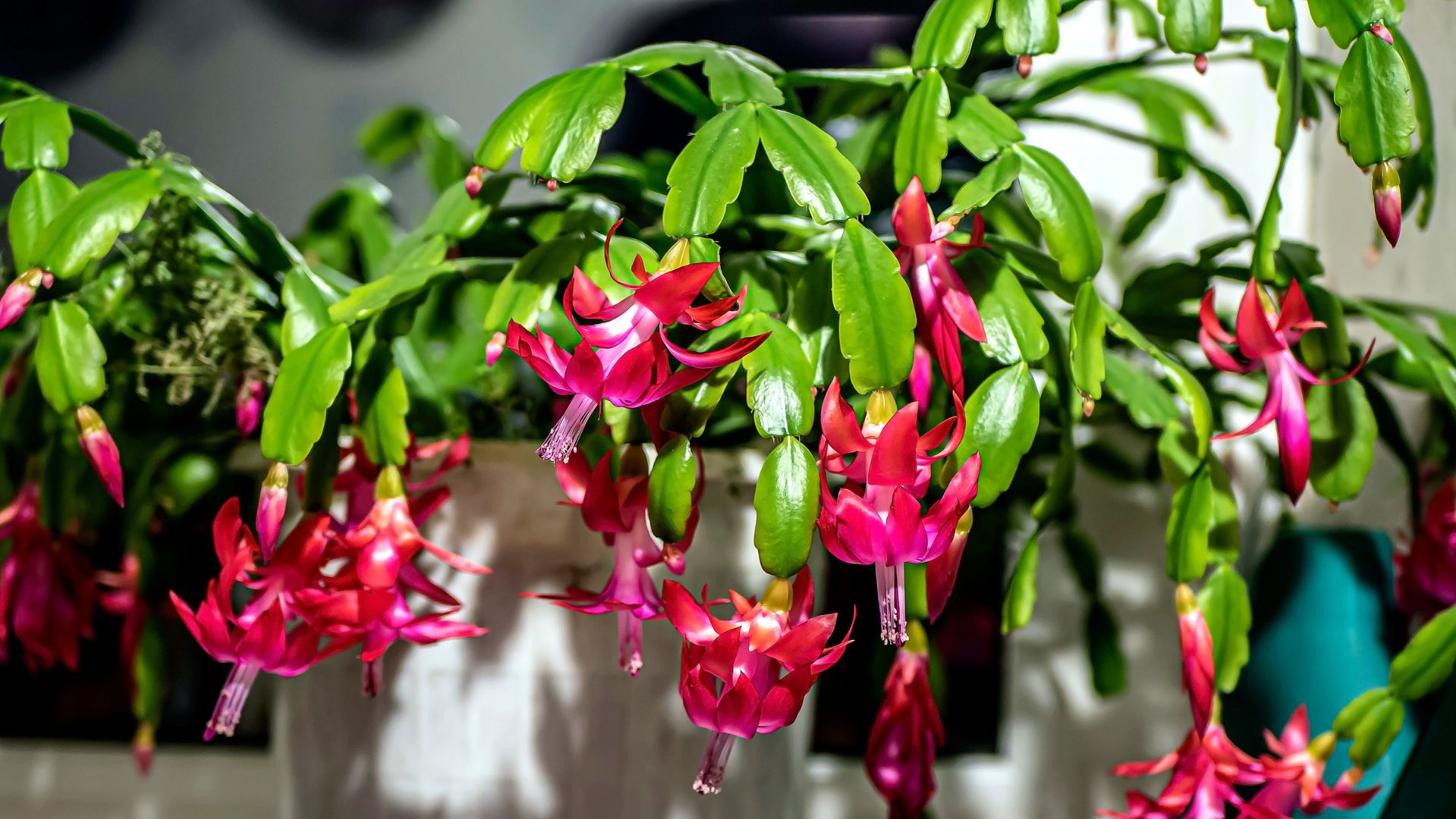
There are a few factors that influence when and how to get a Christmas cactus to flower. Here are 4:
1. Not enough darkness hours
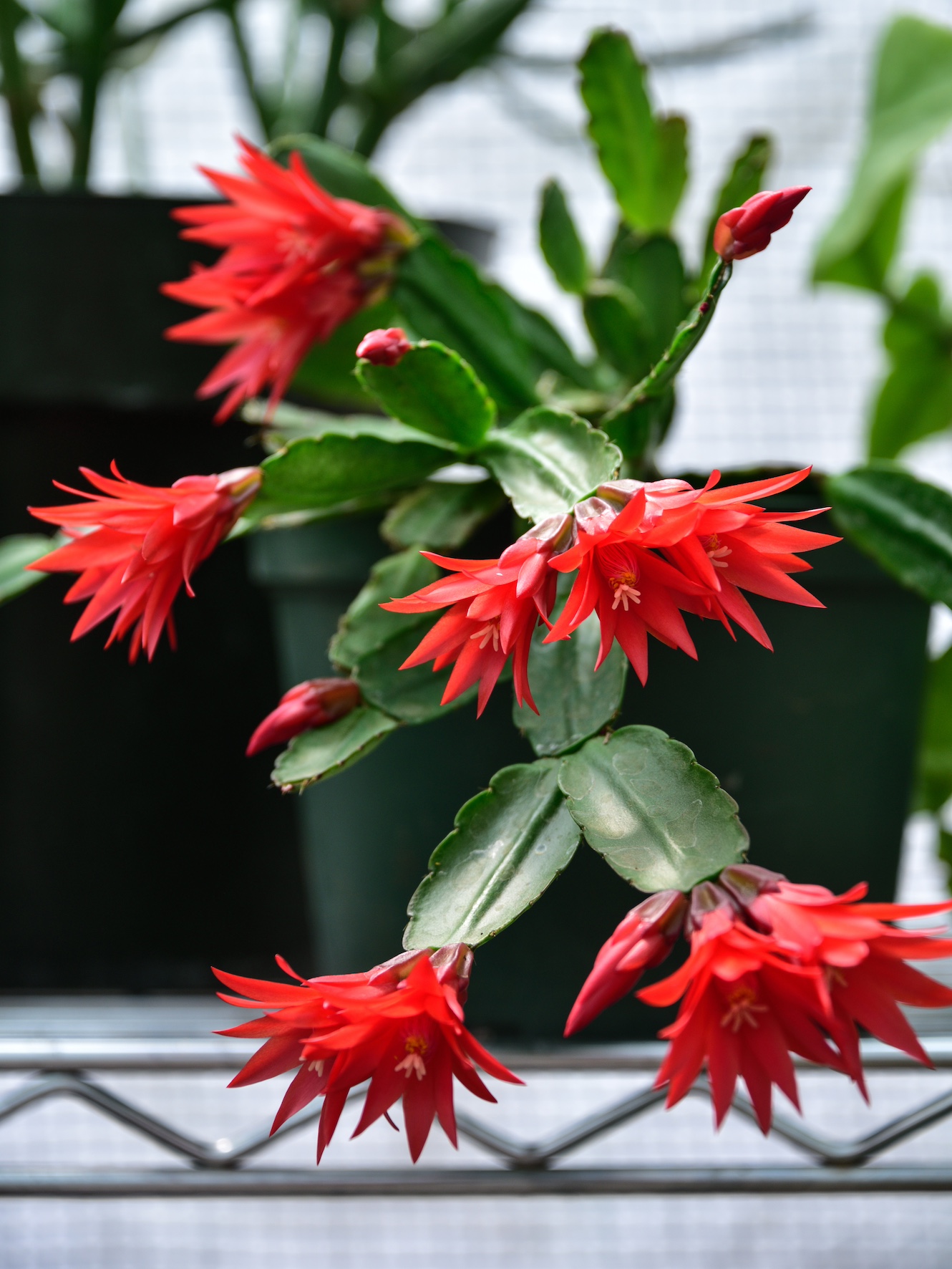
Although they are low-maintenance plants for an indoor garden, Schlumbergera needs certain conditions to flower. If your Christmas cactus's red leaves have turned somber, it may be due to not enough darkness or even light.
The first reason may sound strange, as we're used to most plants needing light to photosynthesize and flower. And don't get us wrong, Schlumbergera needs light, too. However, according to Los Angeles-based plant expert, Mickey Hargitay, founder of Mickey's Plants, this plant also requires adequate amounts of darkness through the night for it to bloom.
"Christmas Cactus are long night/short day bloomers," explains Mickey. "The blooming process is initiated when they receive 15 hours of total darkness. Most commercially grown plants are forced to bloom for the holidays and may have a schedule of their own in subsequent years."
2. Too warm through the night
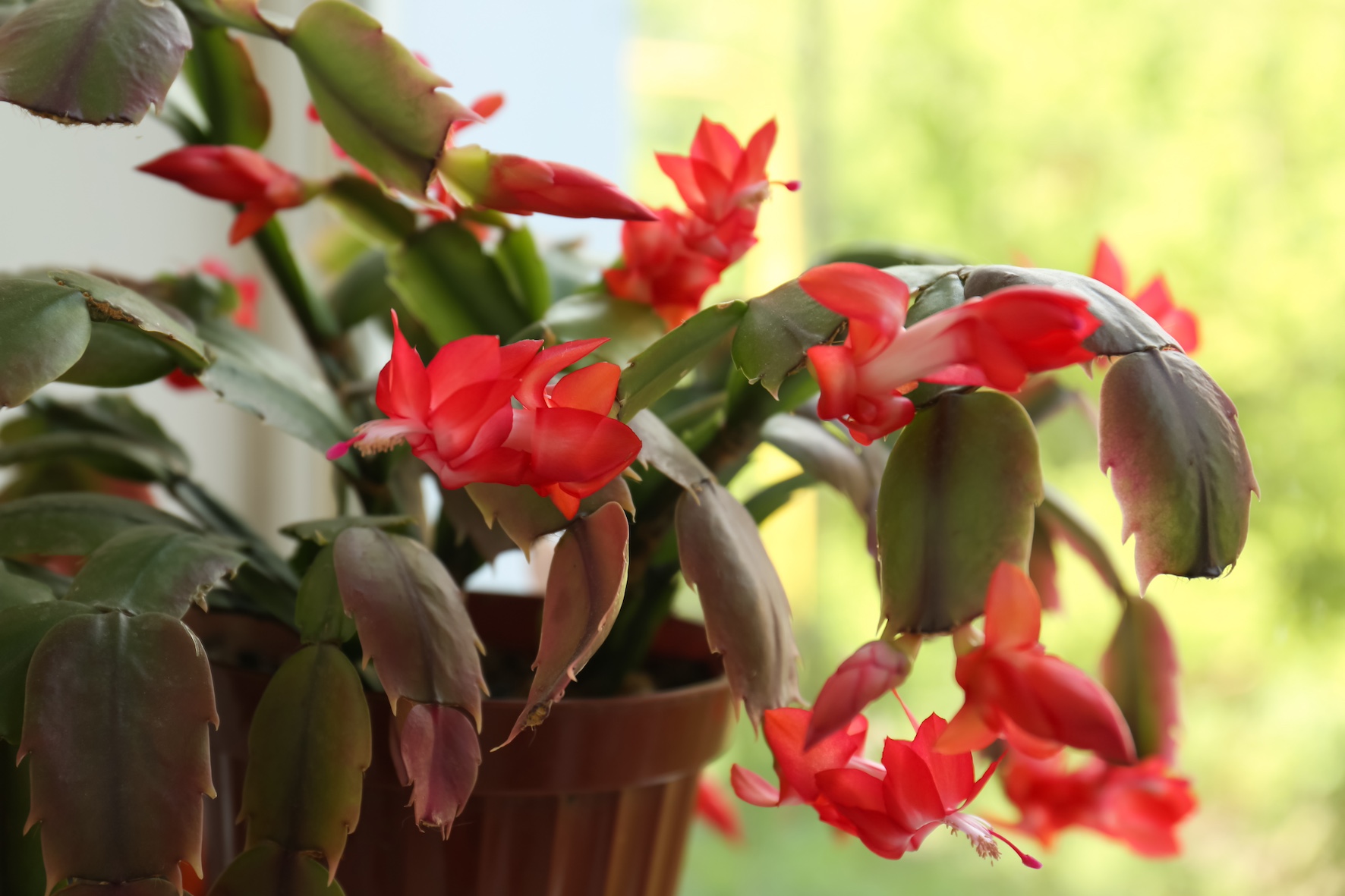
Adjusted to cool nights and hot, humid days in the Brazilian rainforest, these plants don't like to be warm 24/7. Schlumbergera prefers the temperature fluctuations of night and day. So if you're decorating with plants for the holidays, consider your plant's placement carefully.
"In addition to long nights Christmas Cactus also needs cooler nighttime temperatures to finish out the blooming process," says Mickey. "A spot near a window where it can get down to 55-60 degrees F will help it to flower."
3. Not enough light during the day

Although your Christmas cactus requires 15 hours of darkness at night to push it into its bloom phase, it also requires enough light during daytime hours. Knowing how to get a Christmas cactus to flower depends on the right balance of light and dark.
"Light is also key in getting a Christmas Cactus to bloom," says Mickey. "When the plant is not in enough light during the day, the growth will stretch out, become thin and leggy, and the plant will not bloom.
"Even though Schlumbergera are a Cactus, they want to be treated more like a houseplant, so avoid too much direct sun."
4. Too much or too little water
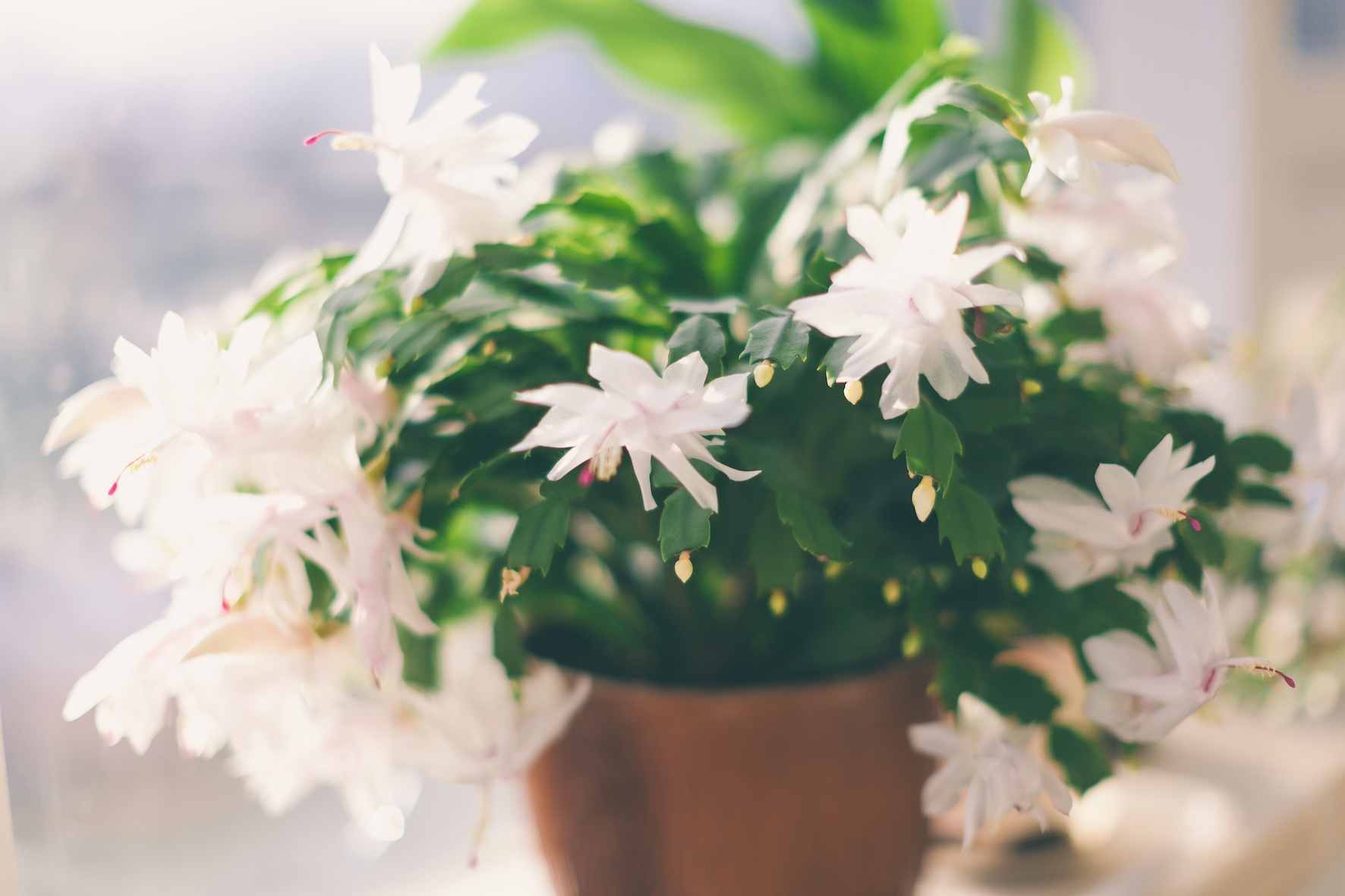
When to water a Christmas cactus is different from other types of cactus that evolved in the desert. Schlumbergera, (like many houseplants), prefer their soil to be moist but not soggy. Unlike most cacti, Schlumbergera do not fare well if their soil is left to dry out completely.
"Because Schlumbergera are jungle cacti, hailing from the Brazilian rainforest, they prefer high-humidity and consistent moisture in a well-draining potting mixture," explains Lisa Eldred Steinkopf, houseplant guru and author of Bloom.
How to fix a Christmas cactus that's not blooming?
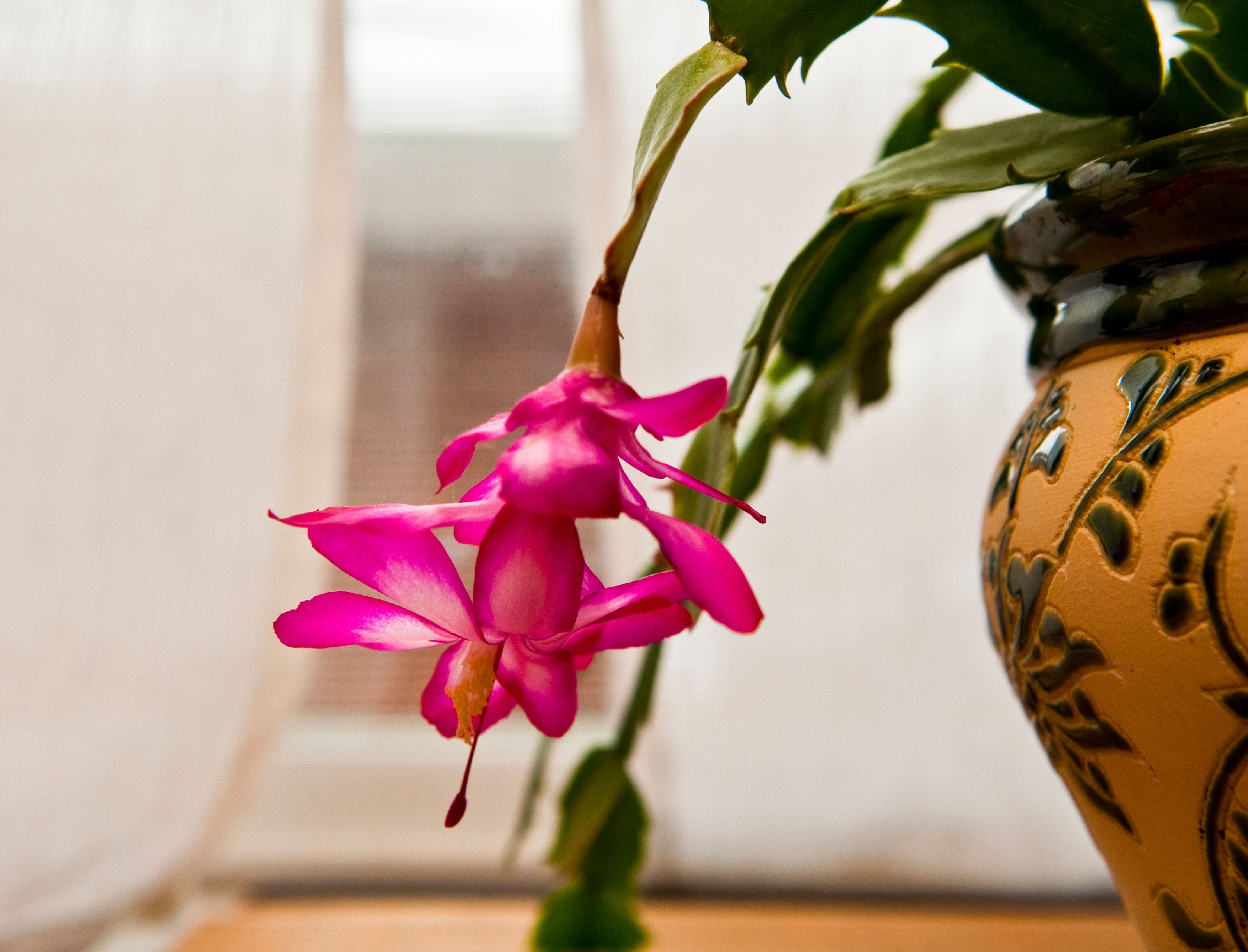
There are a few simple ways you can fix a limp Christmas cactus.
Place near a window: First off, place it near an east or west window. Getting a good balance of light and shade will help your Schlumbergera to bloom. Unlike desert cacti and houseplants for direct sunlight, this species will suffer if it's left in full sun for too long.
"Find a cozy spot where it can soak up the light without getting scorched," says Megan Cain, owner of The Zen Succulent. "Too much direct sun can lead to sunburned leaves, while not enough light can keep those blooms at bay."
Give it enough darkness: Another way to support this bloom is by keeping it cool and giving it enough darkness. As well as a good balance of light and shade, adequate amounts of darkness and cool temperatures, will prompt your Schlumbergera to bloom. "Getting your plant to flower is easy if they are kept cooler in the fall, have long nights and short days, and are not allowed to completely dry out," says Lisa.
"To encourage those stunning blooms, try keeping your Christmas cactus in a cooler spot around 60-70°F during the day in the fall months," says Megan. "Giving it a period of darkness for at least 12-14 hours a day for several weeks can also work wonders in prompting flowers.”
Let it dry between watering: General advice from experts on when to water Christmas cactus is to keep the soil evenly moist (but not soggy) and to not let it dry out completely. "Though they are a cacti, Schlumbergera need different watering practices than desert cacti," explains Lisa. "Whereas desert cacti can be left to dry out, the holiday cacti would rather be kept evenly moist."
However, if you have followed this practice to keep your plant happy and it's not flowering, it may be necessary to let the soil dry — just a little.
Check its pot: To state the obvious, plants grow, and it's possible your Schlumbergera may require a little more space or a top-up of fresh potting mix. Knowing how to repot a Christmas cactus is just like any other plant — just choose a pot the next size up and use an appropriate (well-draining) potting mix. "If you notice your Holiday cactus has outgrown its pot, it might be time for a repotting," says Megan. "Refreshing the soil every couple of years also helps promote healthy growth.”
“After your cactus blooms, consider a gentle trim. Pruning back the stems not only encourages fuller growth but also sets the stage for an even more vibrant display next season," she adds.
FAQs
Is there a difference between Thanksgiving and Christmas cactus?
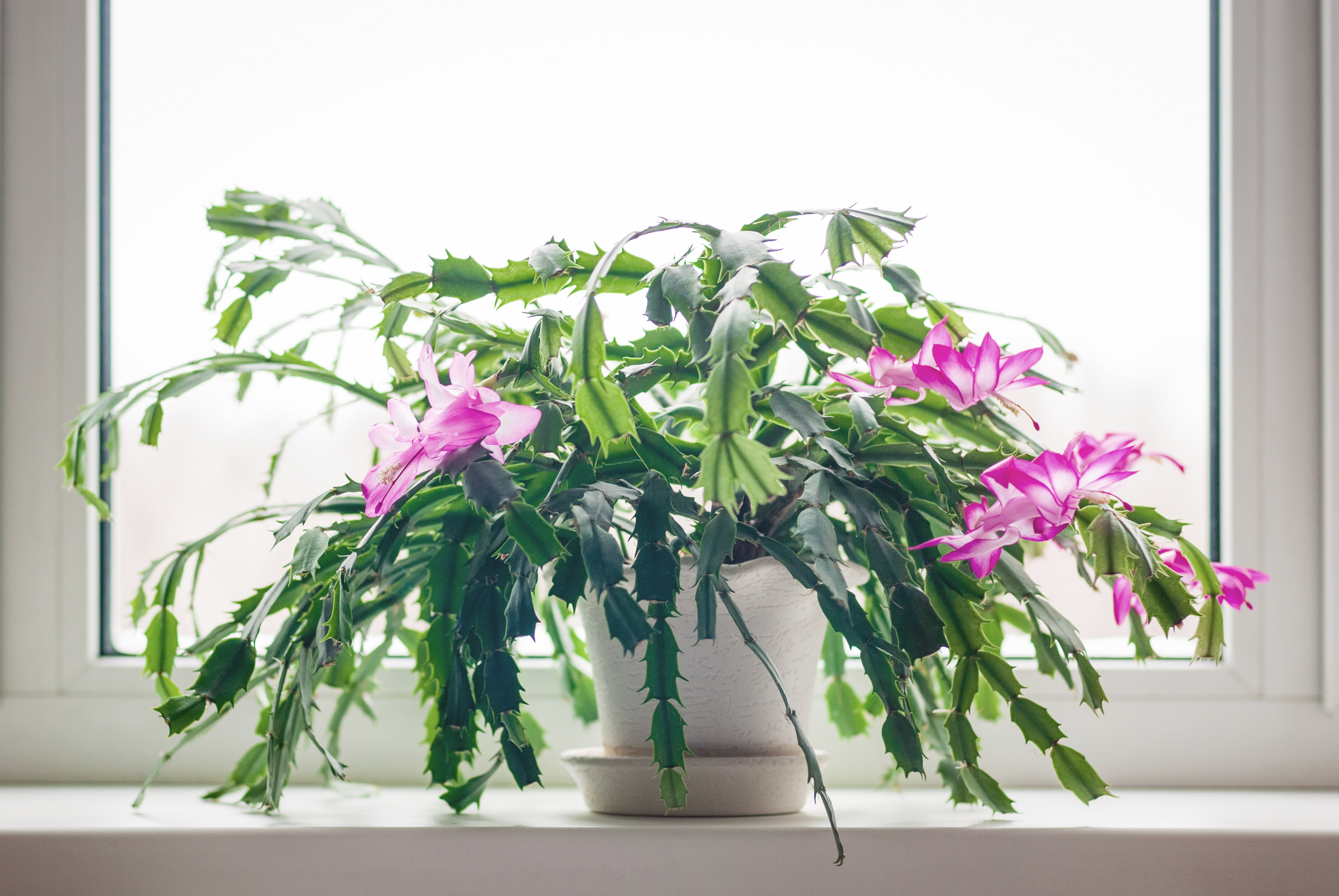
Confused by the different names for the Christmas and Thanksgiving cactus? The plants are extremely similar, and although the names seem inter-changeable, houseplant guru, and author, Bloom, Lisa Eldred Steinkopf, explains the difference.
"Though the plants found today are exclusively hybrids of the Thanksgiving cactus (Schlumbergera truncata), the Christmas cactus (Schlumbergera x buckleyi) isn't the same," says Lisa.
She continues: "Mainly the difference is in the cladodes, or flattened leaf-like stems, that do the photosynthesis work, that leaves perform for other plants. The Thanksgiving cactus, also called the claw cactus, has small points on the segments, whereas the Christmas cactus has rounded edges. Though it has been argued that these plants aren't true cacti, the presence or areoles sets them apart as cacti."
Price: $9.99
Expected to bloom in the winter, this holiday cactus loves to be under full sun and thrives indoors. It is easy to care for and will certainly add color and beauty to your home.







